December 2021

December 2021
With its high-tech gadgetry and glistening cities, contemporary Korea often seems like a glimpse into the future. At Korean Folk Village, however, visitors are taken back into the past, to the days of the Joseon Dynasty (1392-1910), when Korea was a very different place. One of the first open air museums in the country, Korean Folk Village lets visitors experience not only the architecture of traditional Korea, but also the traditions of times gone by.
Written by
Robert Koehler
Photographed by
Studio Kenn
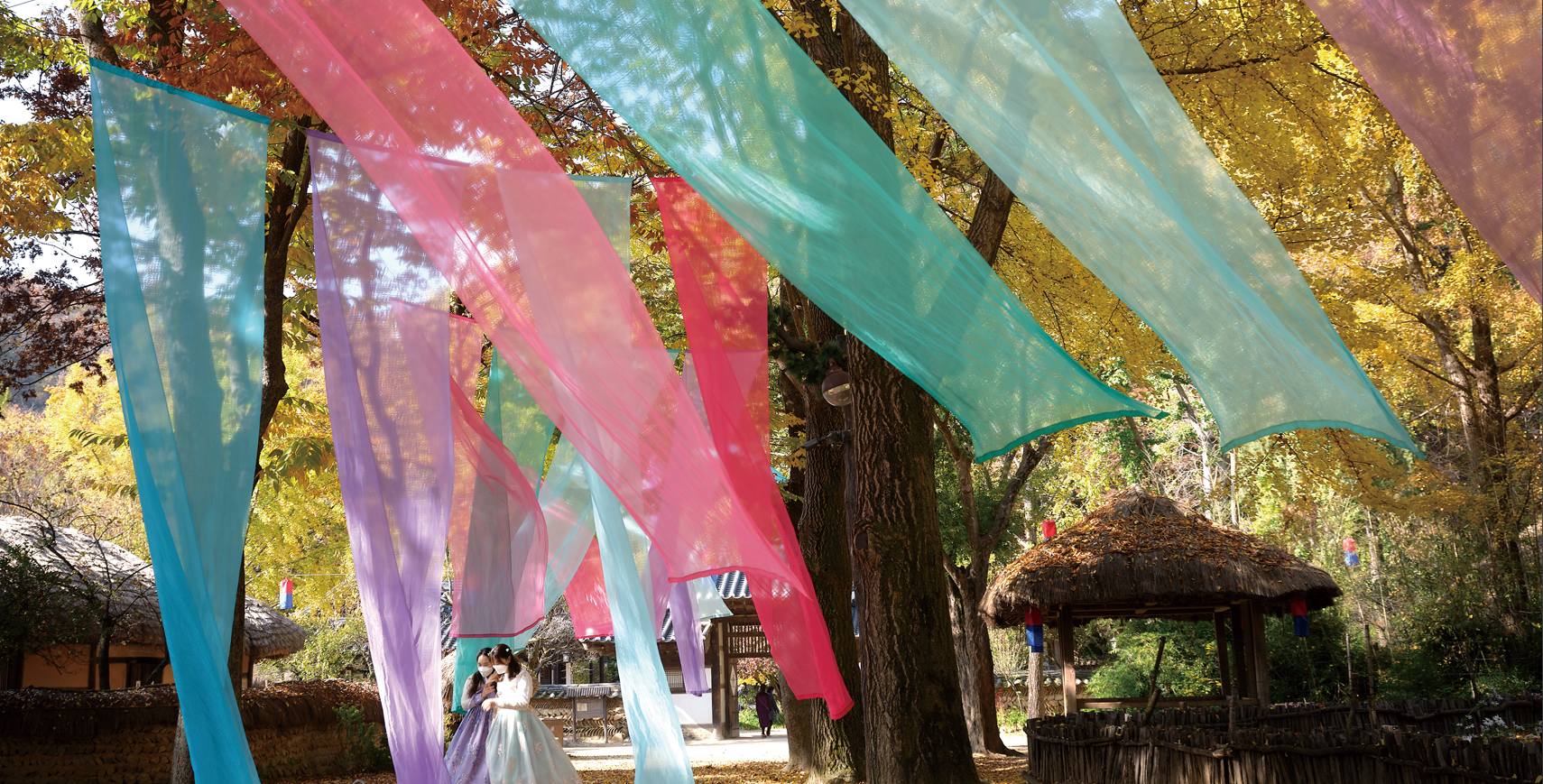
Nestled in the forests of Yongin, a suburb about an hour south of Seoul, Korean Folk Village is a collection of over two hundred Korean traditional homes and other structures, either restored or relocated from other parts of the country. Founded in 1974, the village was a response to Korea’s rapid modernization of the 1960s, a time when not only much of Korea’s architectural heritage was being lost to the wrecking ball, but also traditional lifestyles were giving way to newer forms of living.
Stepping into Korean Folk Village is like walking back several hundred years into the past. Gone are the cacophony and hustle-bustle of modern urban life. Instead, visitors are treated to the sounds of the wind rustling through the trees and water running along streams and ponds. In the Joseon Dynasty, Koreans valued harmony with the natural surroundings, a principle that has been applied to Korean Folk Village, where the surrounding hills, forests and waterways are as much a part of the community as the buildings themselves.
Care has been given to recreating a Joseon Dynasty community in its entirety. Informed by the values and principles of Confucianism, Koreans built their villages to reflect the social order of the age. Visitors will find not only the grand, tile-roofed mansions of yangban (the scholar elite) but also the humbler straw-roofed homes of the common people. You’ll also find old government buildings where officials administered communities and enforced the law, temples and shrines where locals found spiritual solace, school buildings where students learned the principles of Confucianism and other spaces of daily life.
Indeed, so perfect is the recreation that directors often use Korean Folk Village as a filming location for period TV series and films.
 Your trip back in time begins as soon as you set foot in Korean Folk Village.
Your trip back in time begins as soon as you set foot in Korean Folk Village.
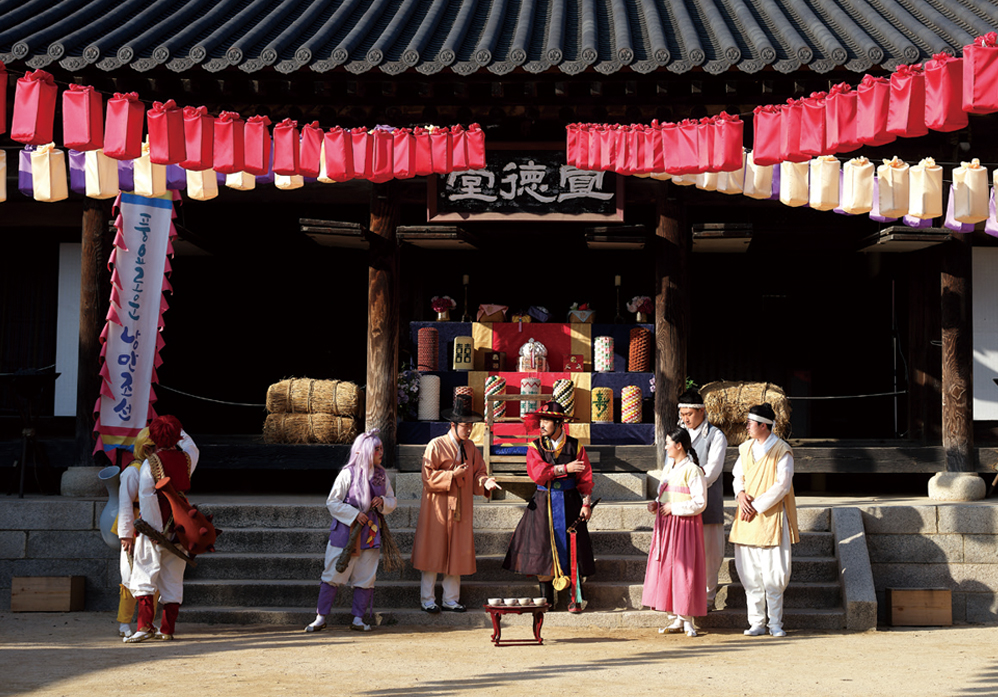 Actors stage a performance.
Actors stage a performance.
Korean Folk Village is more than just a collection of old buildings. It also actively seeks to preserve the ways of the past as well.
Among the homes are nine workshops where you can see artisans at work on traditional crafts such as metalworking, pottery, bamboo craft, mask making and natural dyeing. You may even be able to try your hand at some of these crafts yourself through hands-on programs. Of course, you may also purchase handicrafts as well. These workshops help keep the spirit of jangin(master) alive.
Visitors can also take part in traditional games. Two games you can regularly try are tuho and yunnori.
In tuho, or pitch pot, players attempt to toss arrows into a pot or vase. Whoever gets the most arrows in the pot wins. During the Joseon Dynasty, the game was usually played during palace celebrations or parties by high officials. Though the game may have originated in Tang China, it appears to have come to Korea a long time ago.
Yunnori, meanwhile, is a Korean board game that uses wooden sticks instead of dice. Though the origin of the game remains unknown, it is now a regular part of Koreans’ Lunar New Year celebrations.
Depending on the season or ongoing special events, visitors can try other games as well. One game visitors might try is jukbangul, where players throw and catch an hourglass-shaped bell using a silk thread tied between two bamboo sticks. This game is popular throughout Asia; merchants likely brought it to Korea during the Joseon Dynasty.
Another one is ddakjichigi, in which players attempt to flip folded pieces of paper, or ddakji, on the ground using their own ddakji. A very popular children’s game until the 1990s, ddakjichigi has returned to the popular imagination thanks to the hit Netflix series “Squid Game.”
You might also be able to try jegichagi, a traditional game akin to hacky sack, though using something similar to a shuttlecock rather than a footbag. The game can be played solo or in groups, and is especially popular on the Lunar New Year.
A more recent program is the Ojeogeo Nori zone, a play on the Korean name for “Squid Game.” Like the series, the zone challenges visitors to five games, albeit traditional ones, including ddakjichigi, tuho, jegichagi, Korean marbles and paper folding. Visitors can also have their photos taken in traditional clothing, but with big white characters written on their horsehair hats, akin to the guards in Squid Game.
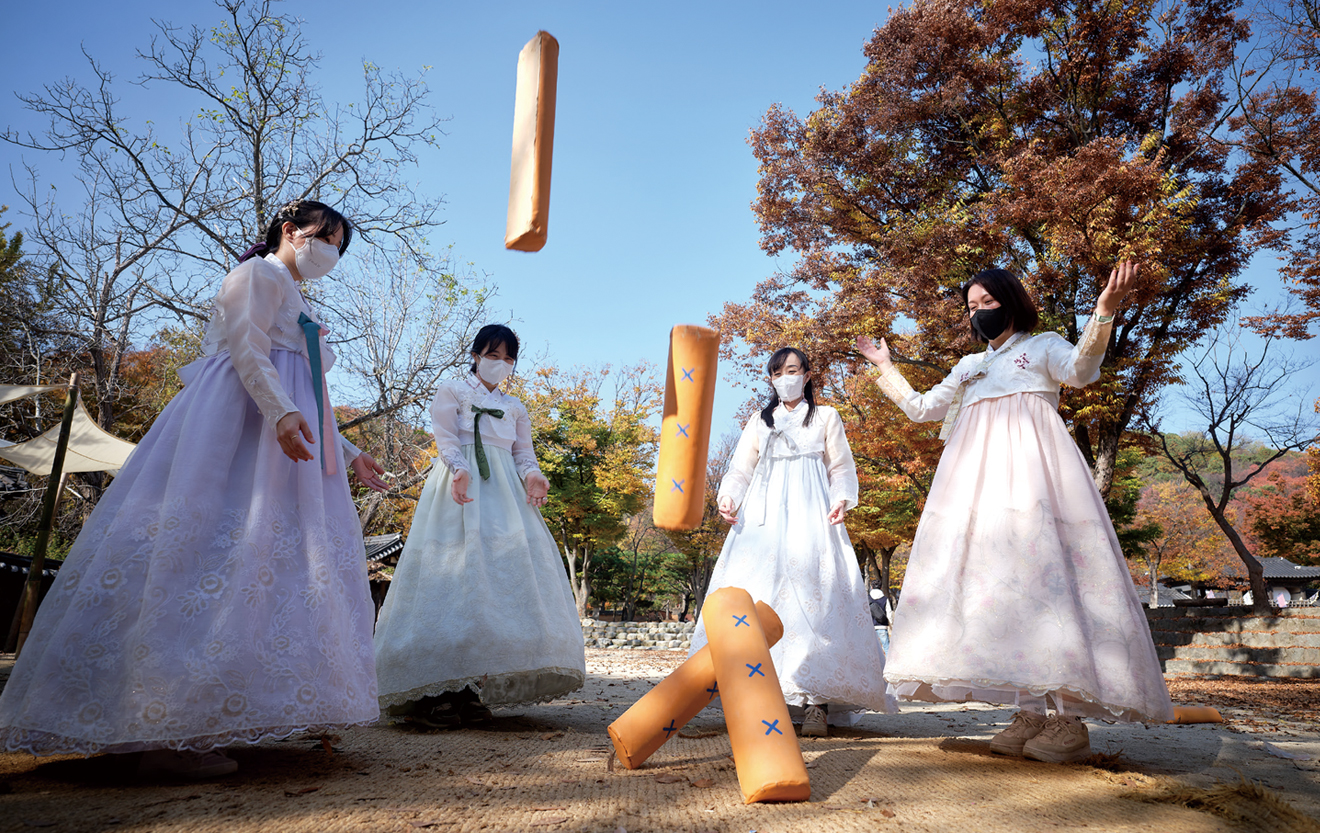 Tourists play yunnori.
Tourists play yunnori.
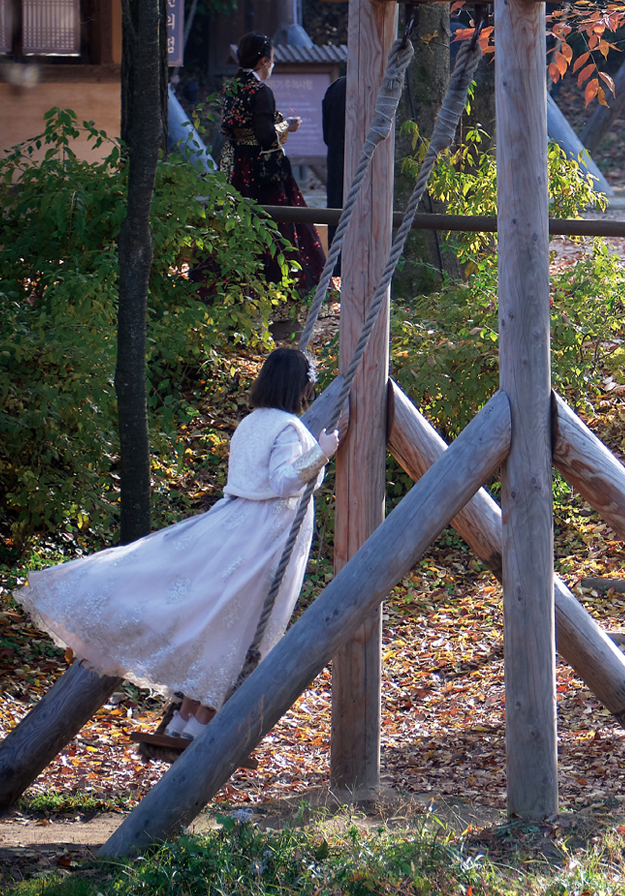 A visitor rides a swing dressed in Hanbok.
A visitor rides a swing dressed in Hanbok.
Korean Folk Village also has several performance venues where visitors can take in demonstrations of Korean traditional music, dances and rites, as well as a wide range of daily, seasonal and special performances. For example, you can experience the energy and excitement of rural percussion music, the thrill of traditional tightrope walking or the beauty and sophistication of traditional weddings.
Visitors wearing Korean traditional attire pay discounted admission. You’ll find people dressed as warriors, royalty, courtesans or aristocrats, making it feel like you’ve really travelled back in time. Likewise, actors dressed in period costume and representing figures and classes from the past greet visitors throughout the village. These change throughout the year, with special events adding to the sartorial diversity―during KOREA Magazine’s visit, there were figures dressed as dokkaebi (traditional Korean goblin), and people dressed in attire of the 1970s and 1980s as part of a retrospective event on games of the past.
No more than a day trip from Seoul, Korean Folk Village nevertheless takes visitors back over a century ago. Its architecture, its landscape and even its games remind guests of the tastes and values of a simpler time, when Koreans lived more communal lives in greater harmony with nature. For overseas visitors, there are few better places to begin learning about Korea and its people.
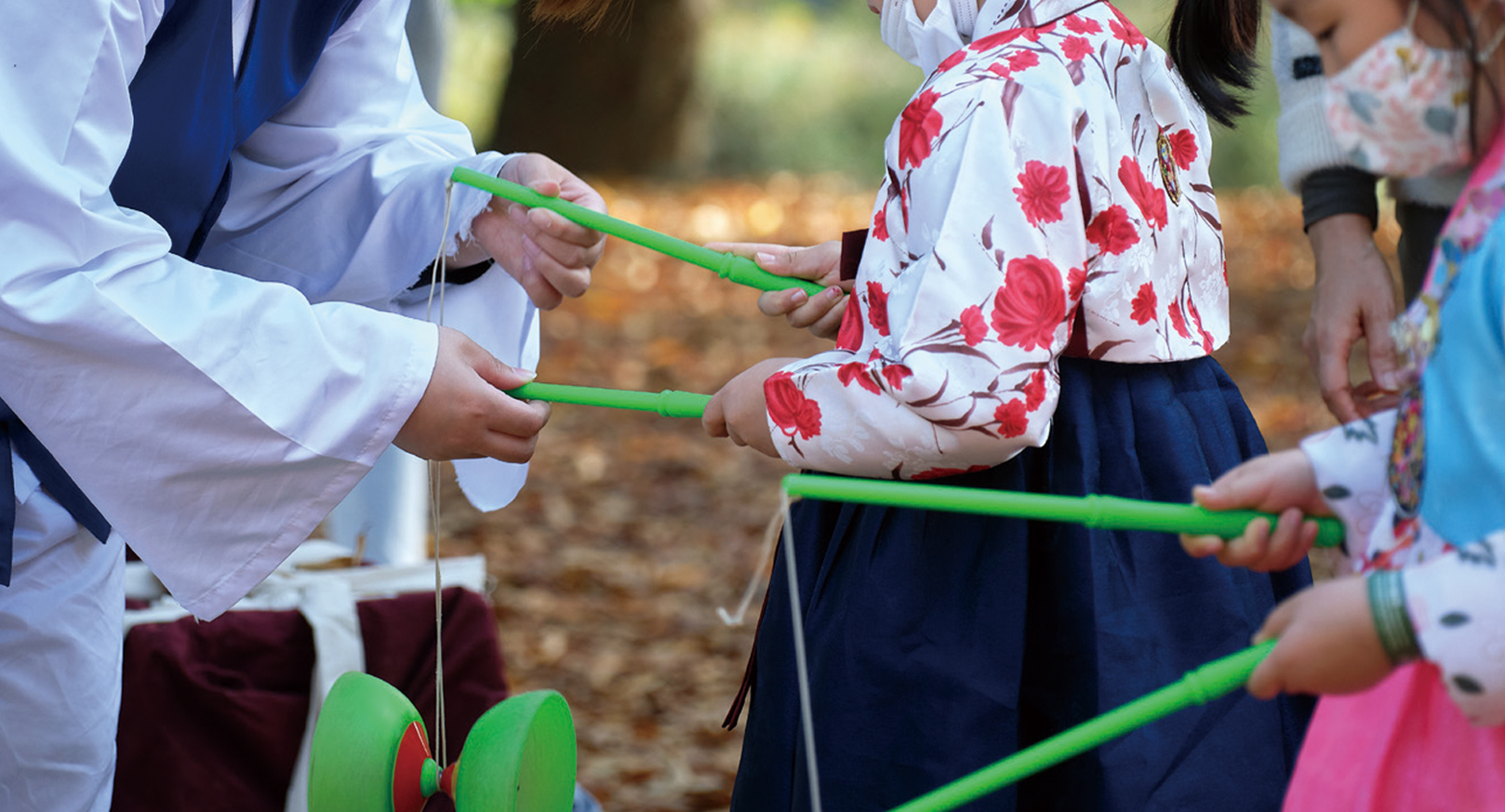 Children experience jukbangul.
Children experience jukbangul.